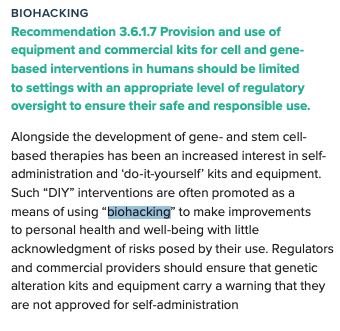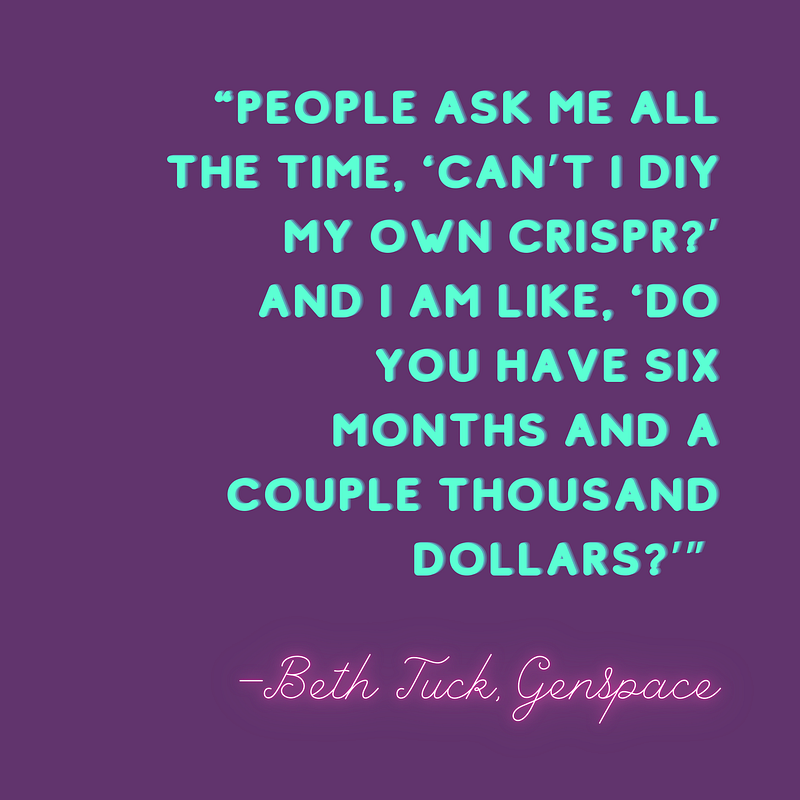Navigating the Complex Landscape of Biohacking Regulation
Written on
Chapter 1: Understanding the Regulatory Landscape
The recent guidance from an international advisory group on stem cell research suggests that biohackers utilizing at-home kits for self-treatment should face stricter regulations. The International Society for Stem Cell Research (ISSCR) has provided lawmakers, ethicists, and scientists with recommendations since 2006 regarding the management of emerging scientific fields, including stem cell research and gene therapies.
In the latest update, the ISSCR has included biohacking in its recommendations for the first time. The guidelines advocate that any use of cell and gene therapy for personal purposes should take place under a structured regulatory framework to ensure safety and responsibility. However, the term "biohacker" remains ambiguous, lacking a universal definition and often existing within a legal grey area, complicating any regulatory efforts. Furthermore, the guidelines fail to capture the intricate dynamics of biohacking, which could hinder the growth of the global Community Bio movement.
Section 1.1: The Misrepresentation of Biohacking
The Guidelines' section on biohacking presents a significant categorization error, merging various distinct groups into one brief paragraph. It inaccurately combines the activities of rogue clinics, individuals promoting unverified treatments, and the DIYbio community—all of which are encompassed under the broad label of "biohacking."

To clarify, clinics such as Medeus in Ukraine and Genome Healing in Australia present themselves as research institutions offering gene-based interventions to the public with minimal oversight. An ISSCR task force member indicated that this section aims to address these clinics. Additionally, the guidelines reference individuals like Dave Asprey, who promote costly and unproven stem cell treatments as part of their biohacking practices.
Conversely, the DIYbio movement consists of independent researchers and citizen scientists who are part of a global network dedicated to increasing accessibility to science and reducing pharmaceutical costs. While some members engage in self-experimentation, the majority are focused on safety and ethical standards.
Section 1.2: The Importance of Precise Guidelines
The ISSCR asserts that commercial genetic engineering kits should be labeled to indicate they are not approved for personal use. This recommendation aligns with a 2019 California law requiring warning labels on biohacker kits sold in the state, aimed at raising consumer awareness of potential risks.
However, the actual instances of genetic self-experimentation within the DIY community are rare, far fewer than the number of educational kits available. The question arises: do these educational kits also require warning labels?
Video: What is biohacking? Meet the biohacker who refuses to age
This video explores the concept of biohacking and introduces viewers to individuals who are pushing the boundaries of human biology.
The guidelines suggest that the promotion of these kits often lacks sufficient risk acknowledgment, particularly in the case of rogue clinics. A warning label might benefit consumers in these situations, but it raises the question of whether such labels would deter determined individuals from using these kits.
Chapter 2: The Consequences of Overregulation
I had a conversation with Beth Tuck, the Executive Director of Genspace, the world’s first DIYbio lab. She believes that warning labels on DIY kits would be ineffective, as those inclined to self-administer gene therapies would likely proceed regardless. Tuck emphasizes the need for regulators to distinguish between the DIYbio community and unscrupulous clinics.
She highlights that robust regulations and safety protocols already exist to manage unintended uses, and that anyone attempting to edit their own genes would likely encounter significant challenges.

Educational outreach programs in community labs employ affordable kits to inspire young students to explore careers in biotech and synthetic biology. A hasty, uninformed regulatory response that unfairly categorizes all forms of biohacking could destabilize a promising bioeconomy.
Tuck asserts, “At our lab, we don’t endorse self-experimentation, nor do we conduct human subjects research.” She urges regulatory bodies to engage with the community to better understand the nuances of biohacking.
Video: DIY Biohacking Can Change The World, If the Government Allows It
This video discusses the transformative potential of DIY biohacking and the challenges posed by regulatory frameworks.
Although the ISSCR Guidelines hint at creating a self-regulatory mechanism for the DIYbio movement, the rationale for including this community in the guidelines remains unclear. To foster innovation while ensuring adherence to responsible scientific practices, regulators should differentiate between harmful biohacking and constructive DIY efforts, listen to community feedback, and adopt a more hands-off approach.